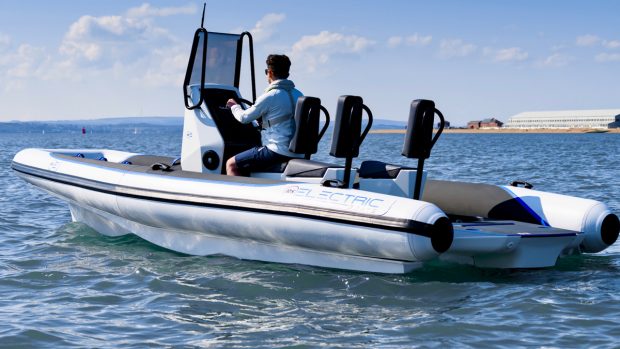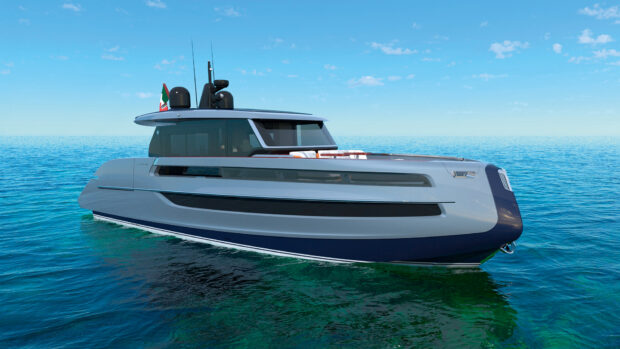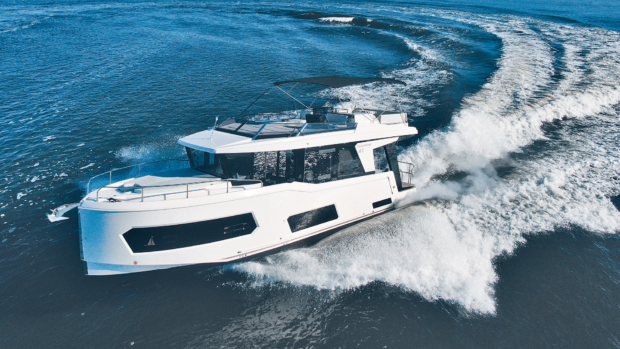Todd Rickard of FPB argues that motorboats are the only way to cross oceans
I got into boating in the most unusual place, growing up in Denver, Colorado, the ski capital, not the sail capital, of the USA.
Landlocked, I moved to Seattle as soon as I had opportunity, where I pursued employment in the marine industry.
A year after arriving Seattle, I started a company rigging sailboats. I had studied information systems at university, and being computer savvy, I started doing electronics and electrical work aboard yachts as well.
We grew the company to about 25 guys who did rigging, refits, systems, electronics, and electrical systems. Most of our work was with offshore, passage making yachts.
In 2006 I received a call from a US distributor we worked closely with. “A boat called Windhorse with a gentleman named Steve Dashew is going to be coming to Seattle on his way up to Alaska for the cruising season. Could you take a look because he’s having problems with his inverter-charger system?”
I had read his book back in high school and thought that it was the Bible of boating. So when I was asked: “Do you know this guy Steve Dashew?” I asked: “Is it the Steve Dashew?”
I was extremely impressed when Steve took me on a tour of Windhorse, the original 83ft FPB prototype. At that point I had been working with boats and boat builders from around the world for over 18 years.
I had delivered clients’ boats around the US and Europe, sailing across the Atlantic and Pacific. I had developed the critical eye that comes from experience. Windhorse was unique. It was the first boat where I didn’t see anything that I would do differently to create a better passage-maker.
This attention to every detail stems from Steve and his wife Linda’s experience offshore. I don’t know of any other designer that has 250,000 miles offshore. He is designing boats for people to go and cruise the world in, not just look pretty at the dock or in an advert.
With Steve it is function first, so as you design something the beauty will often be in the functionality of it. If not immediately apparent, once you realise the functionality of something, you can embrace the beauty of it because it just works so well.
I will admit that I wasn’t keen on the idea that Steve and Linda would make the switch from sail to power, and even less, with a design as radical as Windhorse.
However, after just a few hours aboard Windhorse, seeing the details of the boat, the wisdom and beauty of it started growing on me. It was not long before I was completely hooked.
With a business and family, I am a busy person. When I’ve done passages, whether it’s a 16-day Atlantic crossing, or coming back from Hawaii or other long Pacific passages that are of a similar duration, after about 10 or 12 days I get a little stir crazy because I know things are going on back home that likely need my attention.
To be on passage and know that five days into it I’m half-way there, that’s a big difference in my mind. The average passage-making speed of the FPB is hard to match. More importantly, speed at sea allows better options when it comes to routing around weather systems.
Speed is one of the biggest factors for safety at sea, as long as it is comfortable and under control. Even the longest passage aboard an FPB happens very comfortably at 9.5-12 knots, making it hard to go back to sailing across oceans at under 8 knots. The speed really appeals to me.
I still consider myself a sailor first. I own a J105 sailboat and enjoy sailing her singlehanded as well as with friends and family. I get my sailing buzz racing one-design.
My desire to sail across oceans on isn’t what it once was. With its unique self-righting ability and speed, I much prefer passage making in the FPB.
For sailors owning similarly sized and equipped passage making sailboats to our FPB offerings, they are often surprised that we claim the FPBs to be less costly to run and maintain as a passage-maker. “What about all the fuel cost?” they always ak.
With a background servicing and maintaining offshore sailing yachts, I know that after a couple seasons of sailing a yacht from Lymington, down to the Canaries, over to the Caribbean, and back across the pond, you will probably need to replace the sails, running rigging, and some hardware.
Buying this for a 64 ft sailboat could easily set you back £35,000. Then there is still an engine to maintain, and you’ve likely burned significant fuel as well.
The cost of filling our FPB 64 with fuel in the United States is roughly £7,000. If you consider a similar scenario and say: “I’m going to take that fuel and that’s going to get me to the Caribbean and back,” then add in the maintenance to the engine, you still are ahead of the game in the FPB.
Ask yourself: “What does a first class tickets for two to the States and back on British Airways cost?” Probably more than £7,000, so the fuel cost is quite modest. I have never had an FPB owner complain about the fuel costs.
When Peter Watson, owner of FPB 64 Grey Wolf (pictured below), took her from New Zealand to Guernsey in a three-month trip via the Panama Canal, he fed the engine clean fuel, air, and changed fluids as needed.
With nearly 14,000 nautical miles under her keel, the engine is now just broken in, in great shape, and ready to go again.
It should be good for at least 10,000 hours service before any type of overhaul is required. That equates to roughly 100,000 nautical miles, or four trips around the world.
A similar sized sailing yacht with two circumnavigations under its keel is going to be in need of a costly overhaul of sails, rig, rigging, and engine. So real-world data based on owners’ actual costs, shows that it costs less to run an FPB than a similar size sailboat.
Some may argue a proper set of sails should last twice as long as I have stated, but to be fair, commercial marine users of our John Deere engine swear we should see 20-30,000 hours of trouble free-life as well.
Having a motor yacht that is ultimately as safe at sea as any sailboat, is more comfortable, is more efficient, and is faster. As owner Peter Watson aboard Grey Wolf has proven, this instils a confidence in our owners that leads to epic adventures.
FPB’s are proving that there is a motor yacht passage-maker that is not the money pit traditionally thought of compared to their sailing yacht counterparts.
When you pencil it all out at the end of the day, nothing’s free, even the wind.
About the Author:
Todd Rickard is Program Manager of FPB, a line of passage making motor yachts built in New Zealand by Circa Marine and represented in Europe by Berthon International. He is based in Seattle, Washington USA.









